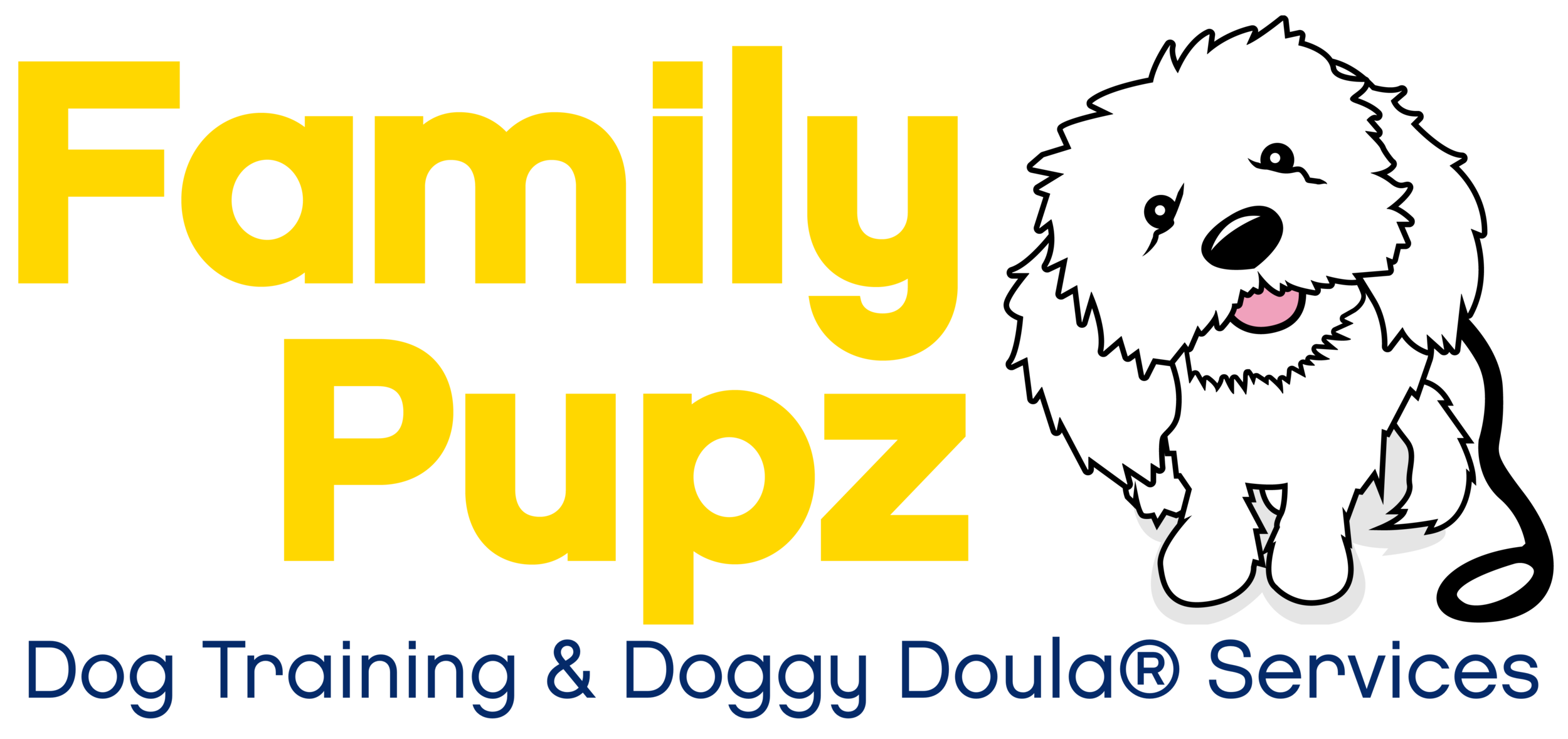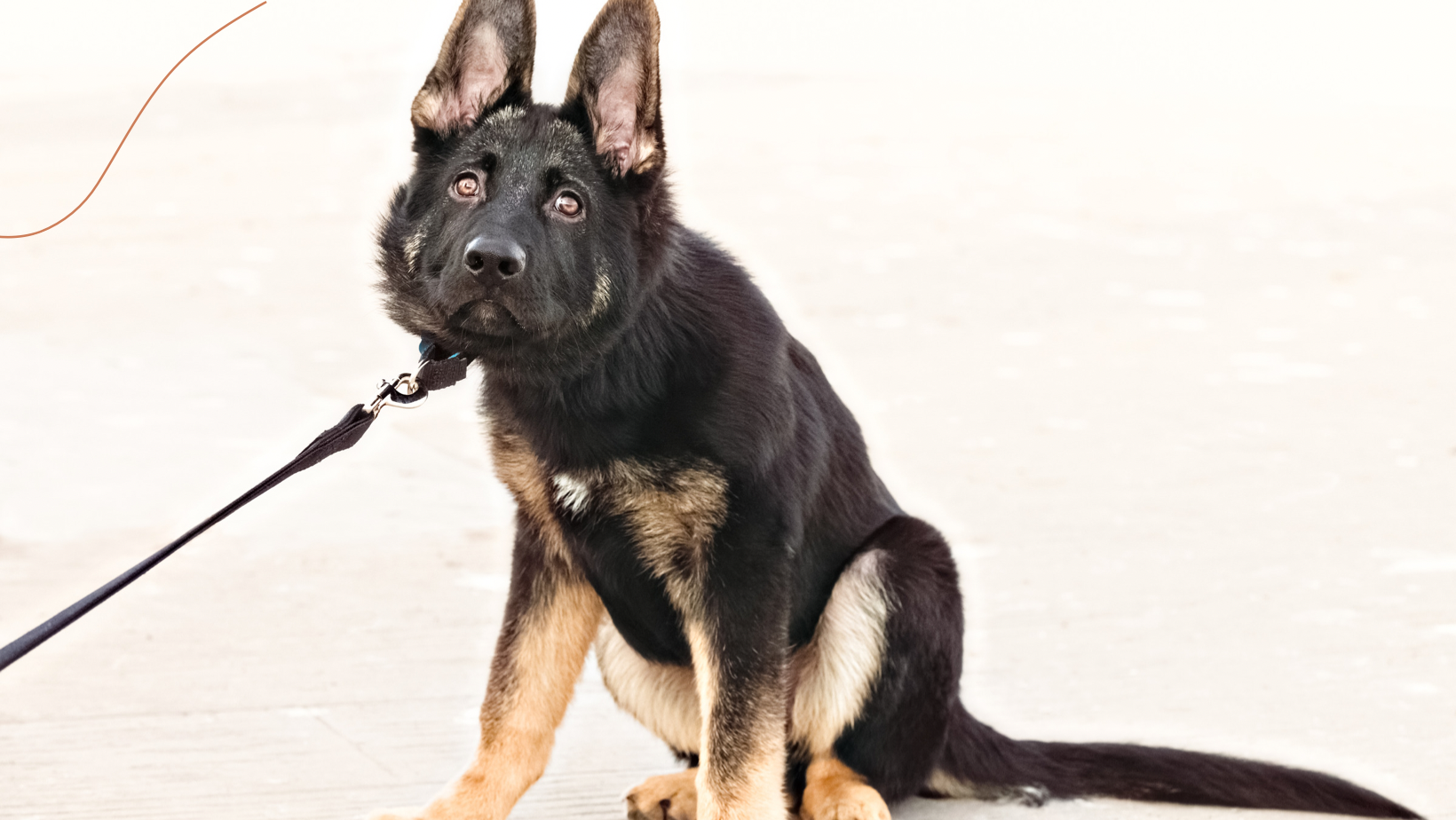How to Train Your Puppy Not To Lunge Towards Other Dogs and People (Part 1)
Puppies are naturally curious and social, so as they start to explore the world more, they will try to interact with it as well.
Most puppies can also be quite fearless and may not have necessarily learned the “social etiquette” required to navigate greetings and play.
For example, most puppies may jump on another dog or person in order to greet them, to get their attention, or to get them to engage. However, some dogs (and people) may find this behavior annoying and may snap back at the puppy to express their personal boundaries.
Our dog is a perfect example of this. He is social and he loves playing with other dogs, but a puppy jumping on his back is a particularly triggering experience that causes him to react by barking/snapping (which is a behavior we obviously don’t love).
Another example that I see quite often is well-meaning puppy parents freely and openly allowing their social puppy to interact with absolutely everyone on walks. Allowing these indiscriminate greetings to occur may be great to satisfy the puppy’s need for interactions, but they don’t address the accompanying pulling / jumping behavior.
And not just that, it also creates the expectation that they can, in fact, interact with everyone and everything in sight, which, in reality, is not realistic since some dogs and people may be too scared, a bit unfriendly or in a hurry, and as such, will not enjoy interact with the puppy.
The inability to reach these “potential friends” can naturally create frustration for the puppy and can cause them to pull even harder, or plant their paws and refuse to walk until the “potential friend” is out of sight.
Just like everything else in life, what we need to teach the puppy here, is BALANCE. This is the idea that sometimes they can say hi to another friendly dog or a person, and at other times, they’ll just need to keep walking or engage in another activity with their human.
So how do we achieve BALANCE?
Teaching the puppy to respond to our verbal cues and hand signals is a great starting point!
Puppies act in ways that come natural to them. These can be instinctual & social behaviors; behaviors that have had a positive consequence for the puppy, but have not been intentionally taught; and skills that we have PROACTIVELY taught them using positive reinforcement, to name a few.
As a puppy trainer, I teach both the puppy and my human clients ways that they can communicate with each other using verbal cues (the words that we use to ask the puppy to perform a known behavior) and hand signals (gestures that we use to help the dog understand the behavior we are asking them to perform). I find that in the initial stages, it tends to be easier for puppies to respond to hand signals over verbal cues.
So what are the best skills to teach a puppy that can help reduce / redirect their pulling / jumping behaviors towards other dogs and people?
1. The “Name Game”
Start within your home and without distractions, call your puppy’s name and at the exact moment when they look at you, mark that behavior with a, “yes!”, and reward. Repeat until they start to consistently look at you when you call their name.
Pro Tip: refrain from using your dog’s name in a threatening way to avoid creating a negative association with their name.
Next, move on to practicing outside with minimal distractions.
Then, call your puppy’s name with another dog being present, but at a distance, and similarly mark and reward that behavior. Repeat as you gradually decrease the distance between your puppy and the other dog.
Pro Tip: it may be easier if you start practicing with a helper dog which will allow you more control over the distance and over what the other dog is doing.
Here is a video example of this exercise from a recent training session with a client:
2. The “This Way!” Cue/ U-Turn
Start with your puppy on a leash, take a few steps forward then say, “this way!”, while using a little piece of treat right in front of their nose to lure your puppy into a turn in the opposite direction, mark the behavior with a “yes!” and reward when your puppy completes the turn and ends up by your side. Repeat a few times.
Next, move on to just saying the verbal cue, “this way!” without using the treat lure, since your puppy should have already developed both the understanding and the muscle memory to complete the u-turn with you.
The goal is for the puppy to respond to just your verbal cue without any pulling or pressure from the leash. This way, they will also be able to VOLUNTARILY walk away from something and follow you as practiced.
Then, move on to practicing your u-turns with other dogs around, starting further away and moving closer as your puppy gets accustomed at responding to you.
Here are a couple of video examples (with & without a helper dog):
3. The “Touch!” Cue, aka Hand Targeting
This skill comes in really handy when you need to get your puppy’s attention or move them in space. What this looks like in practice is teaching your puppy to touch your palm with their nose. Many of my clients tell me that this is their puppy’s favorite skill since it can be a lot of fun!
Hold a treat in your hand for a few moments, then take it away and present your empty palm close to your puppy’s face. They are most likely going to investigate the delicious-smelling palm, so wait for the moment when their nose touches your palm, and when they do, mark that behavior with a “yes!” and reward them. Repeat until they consistently touch your palm with their nose. Then, add your verbal cue — say “touch!”, present your palm next to their face, and when they touch it, mark the behavior with a “yes!” and reward.
Next, practice the “touch!” cue out and about until your puppy responds to it consistently.
Then, move on to practicing with other dogs and people around, first at a larger distance as you gradually decrease the distance over time.
Here is a video example:
4. The “With Me!” Cue
This is usually an end goal when it comes to decreasing pulling and jumping since it removes the puppy’s attention away from the exciting stimulus and gives them an alternative skill that they can perform around them instead of the undesirable pulling/ jumping behaviors.
Note: walking with attention requires a good amount of focus and attention, so it should be taught in short bursts of 5-10 steps at a time. It is not intended to have the puppy watch us the entire time they are on a walk, since being outside should also equal sniffing and exploring the world, which is an invaluable source of enrichment for them (here is a link to our podcast on enrichment for more info on what it is and how to incorporate it into your dog’s life).
With your dog on a leash, choose a side you’d like them to be on. Use the hand that’s on the same side (dog on right, use right hand; dog on left, use left hand) to get a treat by their nose and have them smell it, then lift it up by your chest, which will get the puppy to look up at you, and as soon as they do, start walking while sustaining the eye contact for 2/3 steps, mark that behavior with a “yes!” and reward your dog. Repeat a few times in a row.
Next, as you walk with your puppy by your side, say, “with me!” and move your hand from their nose up to your chest, mark the attention behavior with a “yes!” and reward. Repeat until your puppy consistently looks up at you and is able to walk for a few steps while looking up at you.
Gradually build the number of steps your puppy can take while focusing their attention on until you can reliably walk up to 8-10 steps with them. This is all you really need to walk past distractions.
Then, begin practicing the “with me!” cue in the presence of other dogs and people, starting at a larger distance and gradually decrease the distance over time when your puppy does well.
Here is a video example:
A few final things to remember:
Having a puppy who’s curious and social is great! Your goal is to just help your puppy rehearse behaviors that will make your life together easier in the long run.
Remember to use high value rewards (such a freeze dried liver or meats, boiled chicken, etc) for this type of training since saying hi to others is one of the most fun and reinforcing things a social puppy can do and you need to be able to effectively motivate them to work with you as well.
When it comes to teaching new skills, always start in easy environments with fewer distractions, but once your puppy can consistently respond, make sure to incorporate a wide variety of environments (busier streets, parks, shopping areas, cafes, breweries, etc) that you train at so they can more effectively generalize these skills.
Distance from other dogs and people is your friend. If your puppy is too focused on distractions, add more distance and try again. If they are doing a really great job, don’t be afraid to move right next to the distractions.
Be patient and empathetic towards your dog. Become aware of the labels you may be using to describe them (here is a link to our article on “labels” for more info) that may be causing more damage than help. If your training session is not going well, take a note and take a break. This is a great learning opportunity and will allow you to set your puppy up for success next time.
I hope that you found this article and the tips in it helpful! Of course, I’d love to see your work and progress too. Feel free to tag @familypupz on Instagram in your training videos and pictures! :)
Happy training!


